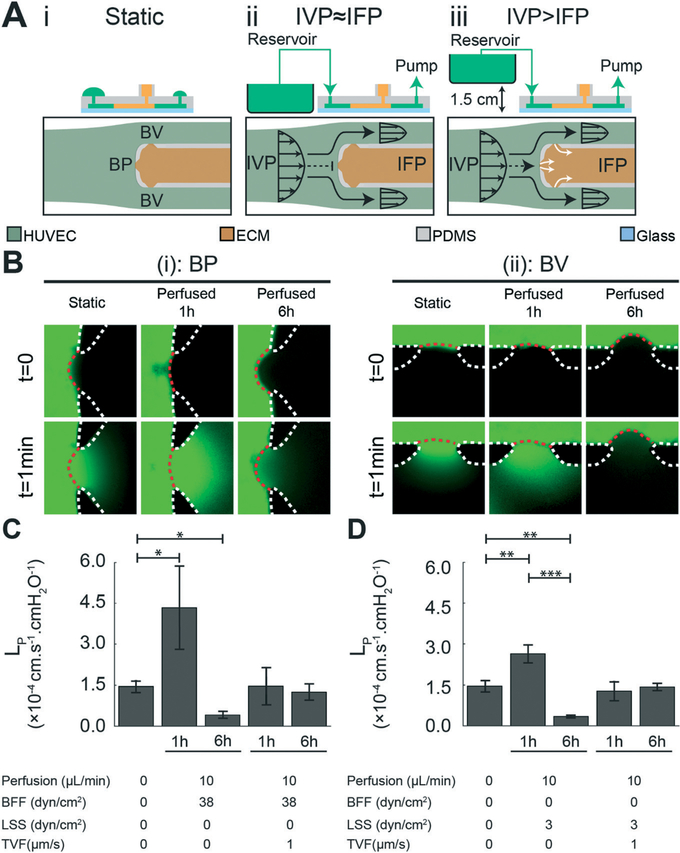Fig. 3.
Bifurcated fluid flow (BFF) and laminar shear stress (LSS) elicit a time-dependent effect on endothelial hydraulic conductivity at the bifurcation point (BP) and branched vessel (BV) apertures, respectively. (A) Schematic of the microfluidic platform, depicting the experimental outline of: (i) static control, (ii) perfused microfluidic device generating BFF (black dashed line) and LSS (black solid lines) under equilibrated intravascular pressure (IVP) and interstitial fluid pressure (IFP), which results in minimal transvascular flow (TVF), and (iii) perfused microfluidic platform under elevated IVP, which results in luminal to abluminal TVF (white solid lines). (B) Representative images of LP measurement after treatment with each experimental test condition at (i) BP and (ii) BV. The white dotted lines represent the PDMS microposts. The red dotted lines represent the semipermeable HUVEC monolayer at each aperture. Scale bars are 100 μm. (C) Quantitative effects of 38 dyn cm−2 BFF and ~1 μm s−1 TVF on endothelial hydraulic conductivity after 1 hour and 6 hours of treatment, compared to static control condition. (D) Quantitative effects of 3 dyn cm−2 LSS and ~1 μm s−1 TVF on endothelial hydraulic conductivity after 1 hour and 6 hours of treatment, compared to static control condition *, p < 0.05 **, p < 0.01, ***, p < 0.001.

